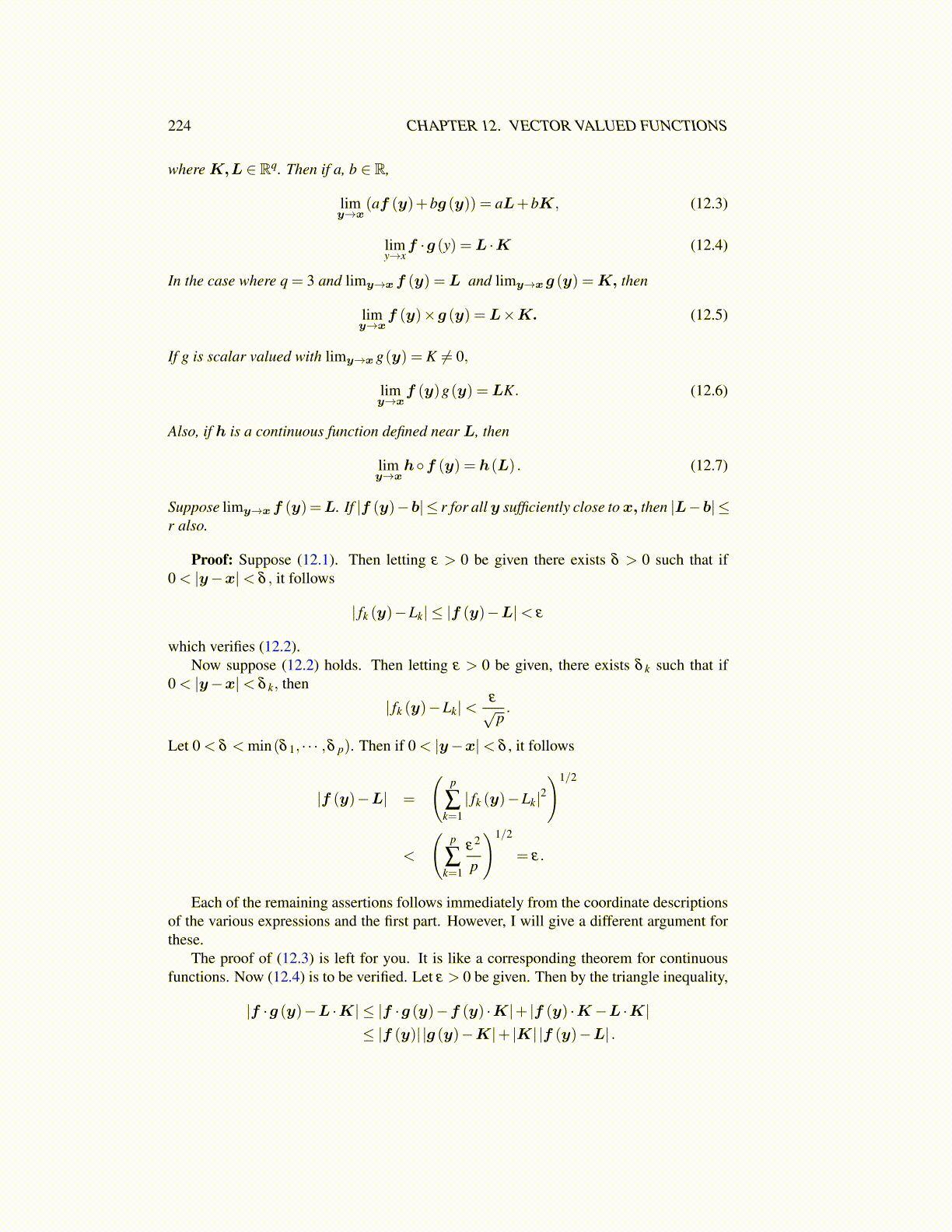
224 CHAPTER 12. VECTOR VALUED FUNCTIONS
where K,L ∈ Rq. Then if a, b ∈ R,
limy→x
(af (y)+bg (y)) = aL+bK, (12.3)
limy→x
f ·g (y) =L ·K (12.4)
In the case where q = 3 and limy→xf (y) =L and limy→xg (y) =K, then
limy→x
f (y)×g (y) =L×K. (12.5)
If g is scalar valued with limy→x g(y) = K ̸= 0,
limy→x
f (y)g(y) =LK. (12.6)
Also, if h is a continuous function defined near L, then
limy→x
h◦f (y) = h(L) . (12.7)
Suppose limy→xf (y)=L. If |f (y)−b| ≤ r for all y sufficiently close to x, then |L−b| ≤r also.
Proof: Suppose (12.1). Then letting ε > 0 be given there exists δ > 0 such that if0 < |y−x|< δ , it follows
| fk (y)−Lk| ≤ |f (y)−L|< ε
which verifies (12.2).Now suppose (12.2) holds. Then letting ε > 0 be given, there exists δ k such that if
0 < |y−x|< δ k, then
| fk (y)−Lk|<ε√
p.
Let 0 < δ < min(δ 1, · · · ,δ p). Then if 0 < |y−x|< δ , it follows
|f (y)−L| =
(p
∑k=1| fk (y)−Lk|2
)1/2
<
(p
∑k=1
ε2
p
)1/2
= ε.
Each of the remaining assertions follows immediately from the coordinate descriptionsof the various expressions and the first part. However, I will give a different argument forthese.
The proof of (12.3) is left for you. It is like a corresponding theorem for continuousfunctions. Now (12.4) is to be verified. Let ε > 0 be given. Then by the triangle inequality,
|f ·g (y)−L ·K| ≤ |f ·g (y)−f (y) ·K|+ |f (y) ·K−L ·K|≤ |f (y)| |g (y)−K|+ |K| |f (y)−L| .